HVAC professionals and their decisions have a significant impact on the ongoing productivity and efficiency of buildings, from commercial premises to educational institutions. Indoor air quality is a core issue.
The role played by HVAC professionals today goes far beyond simply installing and maintaining ventilation systems. The decisions they make can have a lasting impact on a building’s long-term health, productivity, efficiency, and profitability, in terms of:
- Ease of monitoring and managing indoor air quality.
- Cost and efficiency for the building owner.
- Time and management for the facility manager.
- Health and wellbeing of building occupants.
- Productivity and profitability of building tenants.
The issue of indoor air quality is increasingly central to the HVAC remit. Indoor air can be five times more polluted than outdoor air. Public health bodies are focusing on the issue as people in the US and Europe spend up to 90% of their time indoors.
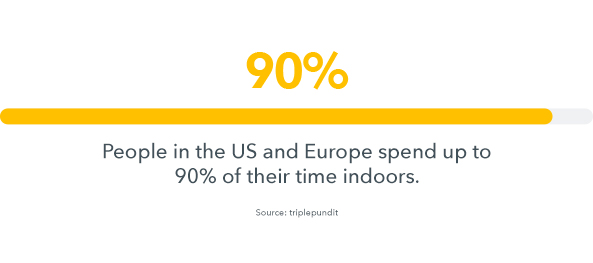 Tenants and occupants are increasingly aware of indoor air quality's impact on productivity and wellbeing, placing it firmly on the agenda for building owners and facility managers. HVAC professionals are in a unique position to deliver value to all of these stakeholders.
Tenants and occupants are increasingly aware of indoor air quality's impact on productivity and wellbeing, placing it firmly on the agenda for building owners and facility managers. HVAC professionals are in a unique position to deliver value to all of these stakeholders.
Ease of monitoring and managing indoor air quality
As indoor air quality rises on the public and business agenda, buildings are increasingly expected to monitor and address air quality issues. A comprehensive system for monitoring all the key aspects of indoor air quality is essential for any modern building.
HVAC professionals often play a key role in this decision-making process, impacting short- and longer-term efficiency. Selecting the right system means greater ease of installation and operation, plus optimal access to indoor air quality data across multiple spaces or sites. Modern wireless systems are swift to install and collect data remotely.
Cost and efficiency for the building owner
By opting for the most effective indoor air quality solutions, HVAC professionals will deliver ongoing operational benefits to the building owner. Occupancy and use of space is often difficult to track, especially in large office complexes or educational establishments. By tracking occupancy via carbon dioxide (CO2) levels, building owners can save money and increase efficiency.
Energy savings result from dialing down equipment or power use in spaces with low or no occupancy. Commercial and retail units also benefit from access to occupancy data. For example, onsite cafeterias can match daily production to footfall, limiting wastage and boosting profitability. Combining real-time and historical data can also drive bigger decisions – for example, whether to build new meeting rooms or make better use of those already available.
Compliance with legislation
There is a trend towards greater regulation on indoor air quality. Radon regulations already exist across the US, while European countries are now requiring public buildings to monitor for the gas, following an EU directive.
The European Commission is building a case for treating indoor air quality similarly to outdoor air pollution, the subject of much regulation in recent years. Meanwhile, the World Health Organization (WHO) has issued in-depth indoor air quality guidelines, stating: “Countries may wish to use [these] as a scientific basis for legally enforceable standards.”
In light of all this, HVAC professionals have the opportunity to play a valuable role in helping building owners and managers understand, anticipate and comply with indoor air quality legislation. This will ensure shared success and a richer ongoing business relationship.
Time and management for the facility manager
The correct indoor air quality monitoring technology saves time for facility managers, enabling better work order prioritization and resource allocation. One central hub receives and displays data from a network of devices across multiple rooms, spaces, and even buildings. This greatly reduces the time and labor spent traveling to different locations and checking each individual sensor.
Alerts draw attention to emerging issues, like a temperature drop or rise in radon gas beyond accepted levels. Armed with the right information, facility managers can plan work, prioritize effectively, and send the right people to do the right job.
Health and wellbeing of building occupants
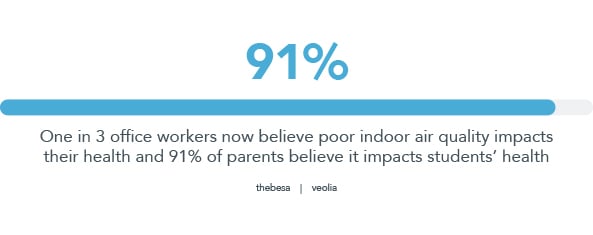 Poor indoor air quality is associated with tiredness, loss of concentration, asthma, respiratory issues, skin irritation, allergies, infectious diseases, and - in the case of radon - cancer. One in 3 office workers now believe poor indoor air quality impacts their health and 91% of parents believe it impacts students’ health.
Poor indoor air quality is associated with tiredness, loss of concentration, asthma, respiratory issues, skin irritation, allergies, infectious diseases, and - in the case of radon - cancer. One in 3 office workers now believe poor indoor air quality impacts their health and 91% of parents believe it impacts students’ health.
HVAC professionals are well positioned to deliver solutions that address concerns by tracking the key contaminants and components of indoor air quality:
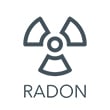 |
Radon gas - leading cause of lung cancer among non-smokers.
|
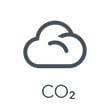 |
Carbon dioxide (CO2) - builds up in poorly ventilated spaces, negatively impacts decision-making and productivity.
|
Productivity and profitability for building tenants
There’s a direct link between indoor air quality and tenants’ productivity. Individual performance suffers in bad air quality and workers take more sick leave. The US economy loses $168 billion annually to poor indoor air quality. In schools and educational buildings, poor indoor air quality raises absenteeism and impacts performance.
Selecting the right monitoring solution, therefore, has real implications for the success of building tenants and – by extension – owners. By delivering a fit-for-purpose indoor air quality system, HVACs enable building owners to promote their premises as the optimal environment for productivity, work, and learning.
How can HVAC professionals make the best possible impact?
HVAC professionals play a crucial role in shaping the efficiency, productivity, health, and success of a building and its occupants. To make the best possible impact:
- Maximize short-term efficiency by selecting indoor air quality monitoring systems that are easy to install and operate.
- Ensure integration of new indoor air quality solutions with existing HVAC and building automation systems so data can be shared easily.
- Maximize long-term efficiency by choosing a system that gathers data on multiple aspects of indoor air quality, presenting it in one central dashboard.
- Be proactive by discussing indoor air quality and its impact with engineers, building owners, and facility managers, and collaborate to implement the optimal solutions.
- Guarantee compliance with current and future indoor air quality legislation, including maximum radon concentrations, acceptable temperature ranges and CO2 levels.
By adopting this approach, HVAC professionals will add value beyond installing and maintaining ventilation equipment. They can become trusted partners and establish more rewarding, longer-lasting business relationships with building owners and managers.
Takeaways
- As indoor air quality becomes more important, HVAC professionals have a key role to play in the health, efficiency and productivity of buildings.
- HVAC decisions impact all stakeholders, including building owners, managers, tenants and occupants.
- Indoor air quality systems that are easy to install and operate will limit time and money spent on setup, yielding operational and cost-saving benefits sooner.
- Monitoring multiple indoor air quality components across different spaces and sites increases efficiency and the management of labor and resources.
- Compliance with current and future indoor air quality legislation is a growing area of concern for and a key area where HVAC professionals can add value.
- HVAC professionals are well-placed to become trusted partners to building owners and managers, helping them to identify optimal solutions and run the building better.

 Most popular
Most popular

 Radon
Radon



 Radon
Radon
 Radon
Radon


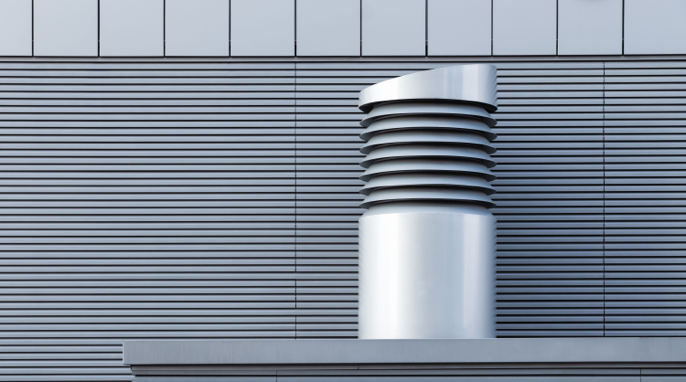
 Tenants and occupants are increasingly aware of indoor air quality's impact on
Tenants and occupants are increasingly aware of indoor air quality's impact on  Poor indoor air quality is
Poor indoor air quality is 